27 Mar 2025
BlogOverview
The principal designer in construction plays a critical role in overseeing health and safety during the pre-construction phase. This responsibility includes ensuring compliance with regulations such as the Building Safety Act 2022, which underscores the importance of risk management and effective stakeholder communication. By detailing the principal designer’s role in coordinating design efforts, mitigating risks, and fostering collaboration among all involved parties, we can see how this position ultimately enhances project outcomes and public safety.
This role is not just about compliance; it is about actively improving the safety and efficiency of construction projects. The principal designer must navigate complex regulations and lead teams to ensure that every aspect of the design is aligned with safety standards. Through effective communication and collaboration, they can address potential risks before they escalate, thereby safeguarding not only the project but also the community it serves.
In summary, the principal designer’s oversight is vital for promoting a culture of safety and compliance in construction. Their expertise not only helps in adhering to legal requirements but also in achieving superior project outcomes that prioritise public safety.
Introduction
In the dynamic and ever-evolving landscape of construction, the role of the Principal Designer stands as a cornerstone for ensuring health and safety throughout the project lifecycle. Appointed by clients, these professionals are charged with the critical responsibility of:
- Integrating safety measures from the very outset
- Deftly navigating a complex web of regulations
- Coordinating the efforts of diverse stakeholders
Given the industry’s heightened scrutiny following recent tragedies and the introduction of the Building Safety Act 2022, the responsibilities of Principal Designers have become more essential than ever. This article explores the fundamental functions of Principal Designers, examining their profound impact on:
- Project management
- Compliance
- The future of construction safety
It underscores the importance of collaboration and innovation in achieving successful outcomes, prompting readers to consider how these elements can drive progress in the industry.
Defining the Principal Designer Role in Construction
A principle designer plays a pivotal role in the construction process, tasked by the client to oversee health and welfare during the pre-construction phase of a project. This responsibility is delineated in the Construction (Design and Management) Regulations 2015 (CDM 2015), which stress the necessity of embedding protection into the design from the outset. They coordinate the efforts of all creators involved, ensuring that health and welfare considerations are prioritised and seamlessly integrated into the design process.
As noted, “Design work should be appraised and challenged by principal designers in a way that helps designers to reach consensus on their designs.”
This proactive approach is essential for mitigating risks and ensuring compliance with relevant regulations, particularly in light of the Building Safety Act 2022, which seeks to elevate standards for residential buildings, especially those exceeding 18 metres or seven stories. The Act, effective from October 2023, was instituted to address systemic issues highlighted by the Grenfell Tower disaster in 2017, underscoring the urgent need for stringent risk management in construction.
To effectively implement the role of principal designer, it is crucial to adopt the Golden Thread Framework, engage with the Building Safety Regulator, and develop comprehensive case reports for high-risk residential buildings. By streamlining collaboration through digital tools, design teams can enhance compliance with the Act, improve management practices, and foster effective communication among all stakeholders. Practical steps for compliance with the Building Safety Act encourage design teams to embrace these frameworks and tools, ensuring a robust management approach.
Those who fulfil their Principle Designer responsibilities and demonstrate their expertise not only contribute to a safer building industry but also stand to gain financially. The influence of the Principle Designer on health and well-being in building projects is significant, as they ensure that protection is a fundamental aspect of the design process, ultimately leading to improved project outcomes and heightened client satisfaction. As the sector evolves, the role of the Principle Designer will remain vital in navigating the complexities of health and security.

Understanding the Legal Framework: The Building Safety Act 2022
The Building Safety Act 2022 marks a pivotal shift in construction security, particularly for high-risk structures. This legislation mandates that the Principle Designer assumes a critical role in prioritising health and well-being throughout the design process. Their responsibilities encompass the planning, management, and monitoring of design work to ensure compliance with stringent regulations.
Notably, this Act delineates clear lines of responsibility and enhances communication among all stakeholders in a building project, thereby reinforcing the principal designer’s role in safeguarding public well-being.
As we approach 2025, statistics reveal that 96% of the 162 social sector residential buildings in the ACM programme have initiated or completed remediation efforts, underscoring the Act’s positive impact on building enhancement. Additionally, local authority enforcement actions have been taken against 483 buildings exceeding 11 metres with unsafe cladding, with 110 classified as Category 1 under the Housing Health and Safety Rating System (HHSRS). These figures highlight the pressing need for compliance with the Building Safety Act, especially as the government plans a comprehensive review of Building Regulations to enhance clarity and accessibility for all construction entities.
Expert opinions suggest that expectations regarding building standards will intensify in 2025, with anticipated developments in legislation and judicial guidance poised to significantly influence the sector. More is anticipated regarding building security in 2025, both in terms of further legislation and also guidance from the courts. The principal designer must adeptly navigate these evolving regulations, ensuring that all design aspects align with the latest standards for protection.
By fulfilling these obligations, they not only meet their legal responsibilities but also bolster the overall security and integrity of building endeavours, ultimately fostering a culture of well-being that benefits all parties involved.
Edmond Shipway’s competitive advantage stems from its rich legacy in cost consultancy, coupled with a contemporary approach to management and sustainability. This unique positioning empowers the firm to adeptly manage the complexities of the Building Safety Act 2022, ensuring that their initiatives not only comply with the latest regulations but also prioritise security and quality throughout the design and construction process.
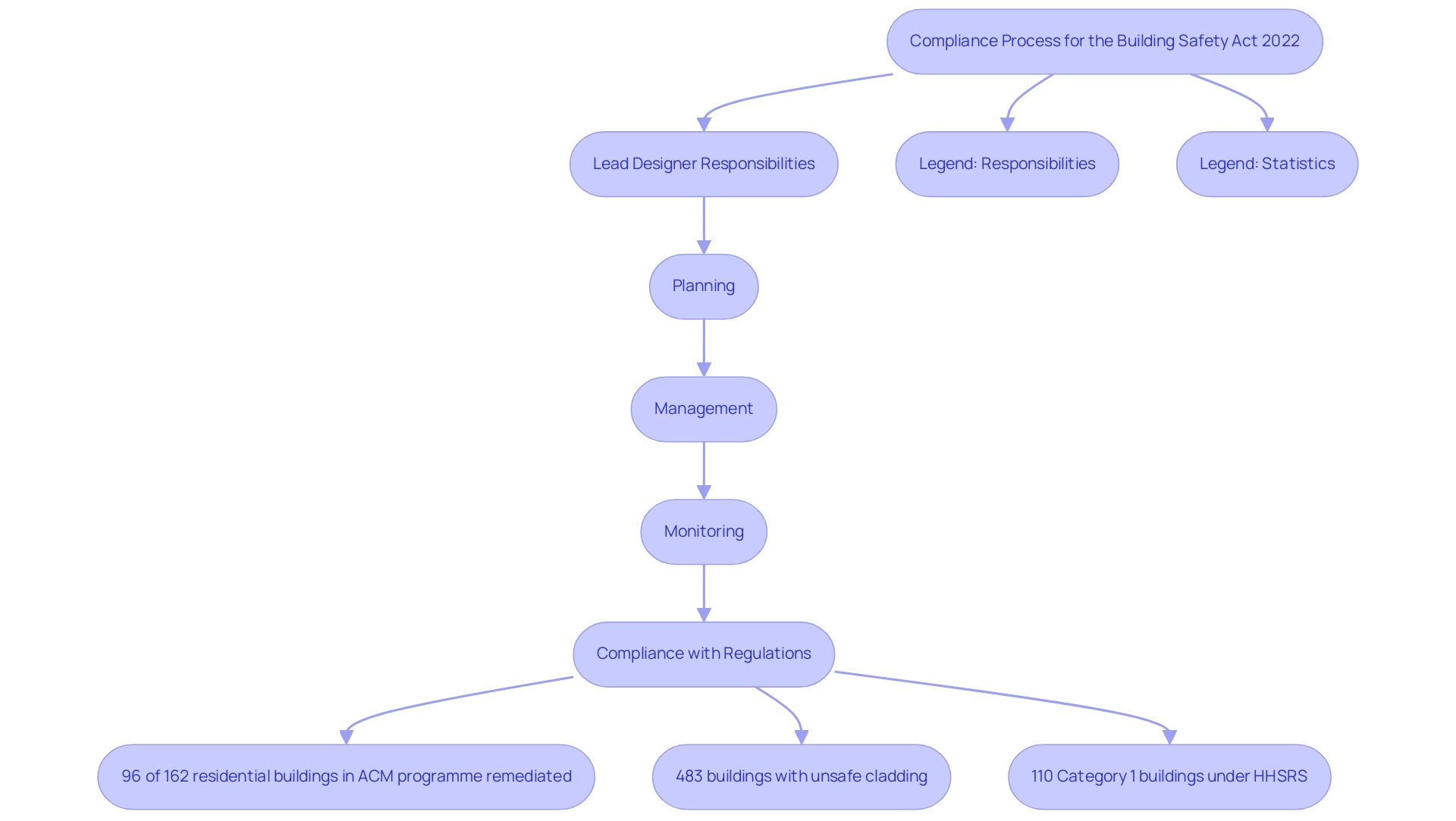
Key Responsibilities of a Principal Designer in Project Management
The Principle Designer plays a pivotal role in the pre-construction phase, encompassing essential responsibilities in planning, managing, and coordinating health and safety measures. This role is crucial for ensuring that all design work adheres to relevant regulations and standards. Effective communication among all stakeholders—including clients, contractors, and other designers—is vital for identifying and mitigating risks early in the development lifecycle.
Statistics from 2025 reveal that:
- 94% of businesses recognise management as essential for growth, underscoring the significance of the Principle Designer’s contributions.
- 60% of managers indicate that they typically apply a predefined methodology, illustrating the structured approach that enhances the effectiveness of the principal designer’s role.
They are tasked with maintaining a risk register, which records foreseeable risks and outlines measures implemented to address them.
This proactive approach is essential not only for ensuring safety but also for the overall success of construction efforts.
Recent case studies emphasise the duties of Principle Designers in effectively managing risks associated with their undertakings. With 62% of organisations anticipating an increase in work tasks and a shift toward smaller, agile teams, the necessity for intelligent workflows and AI-driven automation becomes evident. This evolution in management compels Principle Designers to adjust their strategies to improve visibility and adaptability, ultimately resulting in better alignment with strategic priorities.
Effective management of tasks is essential for navigating the complexities of building initiatives.
Moreover, specialist insights highlight that the principal designer’s role in risk management is critical, particularly in addressing the intricacies of building projects. By focusing on health and protective measures, they ensure compliance with industry standards, which is increasingly important in today’s construction landscape. As the sector evolves, the responsibilities of principle designers will continue to expand, solidifying their position as essential to achieving successful outcomes.
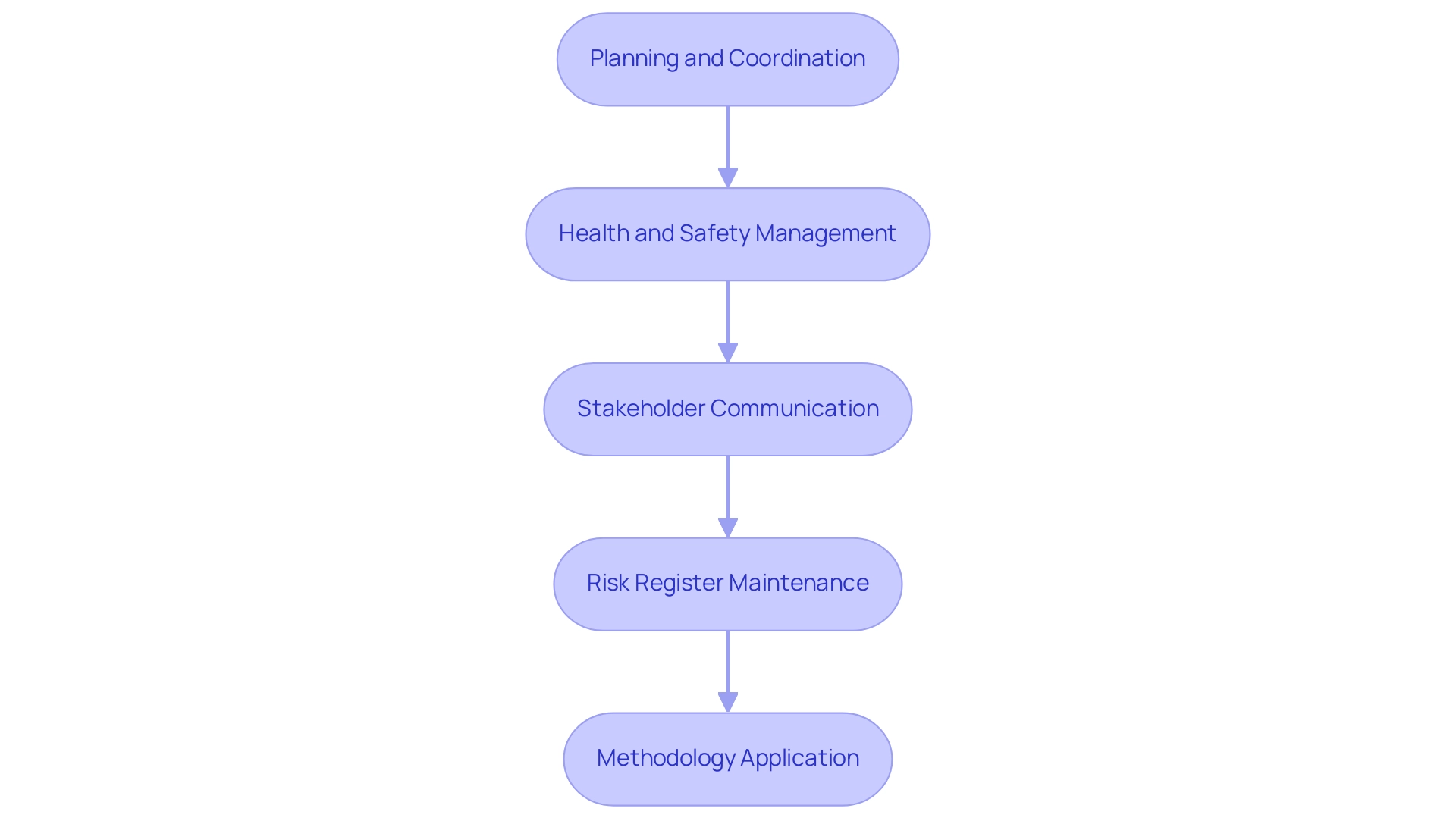
Competence Requirements for Principal Designers: Ensuring Safety and Compliance
To be designated as a Principle Designer, individuals must demonstrate a strong level of skill in both design and management, alongside a thorough understanding of health and safety regulations. Essential qualifications generally encompass a degree in architecture, engineering, surveying, or a related field, complemented by considerable experience in overseeing construction activities. Moreover, effective communication and leadership abilities are crucial for the principle designer to successfully coordinate with various stakeholders throughout the lifecycle.
In 2025, the competence requirements for Principle Designers have become increasingly stringent, reflecting the industry’s commitment to security and responsibility. The introduction of the Building Safety Act 2022 has established new legal obligations for designers and clients, emphasising the necessity for demonstrated competence in building projects. This shift aims to enhance accountability and prevent tragedies similar to those highlighted by past incidents, such as Grenfell.
The recent overhaul of the legal framework around building regulations has underscored the role of the principal designer as critical for ensuring building safety, as noted in the case study on Building Safety Regime Changes.
Statistics indicate that a significant percentage of building professionals are now pursuing additional training to meet these evolving standards. For instance, recent surveys reveal that over 70% of managers in the building industry are engaging in ongoing professional development to remain informed about the latest regulations and best practices. This trend underscores the importance of continuous education in maintaining the high standards expected of principal designers.
Instances of pertinent training and qualifications encompass specialised courses in health and safety management, risk assessment, and leadership. These programmes are designed to equip lead designers with the essential skills to navigate the complexities of contemporary building projects effectively. The Building Safety Act represents a seismic shift in construction regulation following the sobering lessons of the Grenfell tragedy.
Navigating Challenges and Risks as a Principal Designer
In the building environment, Principal Designers face a multitude of challenges, particularly in 2025, where managing intricate task dynamics is essential. They must ensure adherence to an ever-evolving set of regulations, as non-compliance can result in significant legal penalties and delays. Statistics reveal that a considerable percentage of building endeavours encounter compliance-related issues, underscoring the critical need for vigilance in this area.
The Principal Designer is tasked with coordinating multiple stakeholders, each bringing distinct interests and priorities to the table. This necessitates effective communication and collaboration to mitigate risks and keep the project aligned with its objectives. By proactively identifying potential challenges, such as shifts in market dynamics or changes in regulatory requirements, Principal Designers can significantly enhance project outcomes, playing a crucial role in ensuring public safety.
Recent case studies, particularly those reflecting the impact of government investments in infrastructure, illustrate that ongoing support can drive growth in the building sector. However, this also means that principle designers must remain adaptable, ready to navigate the complexities introduced by new policies and economic conditions. The changing environment necessitates a strategic approach to compliance and risk management.
As the building sector evolves, the role of the Principle Designer will increasingly focus on risk management strategies. This includes implementing robust frameworks to address compliance risks and leveraging expert opinions to inform decision-making. By adopting these strategies, principle designers not only protect their projects but also enhance the overall success and sustainability of the building industry.
Edmond Shipway, with its extensive consultancy services in building, plays an essential role in assisting Principle Designers by offering expert advice in management and compliance, ensuring that initiatives are carried out effectively and sustainably.
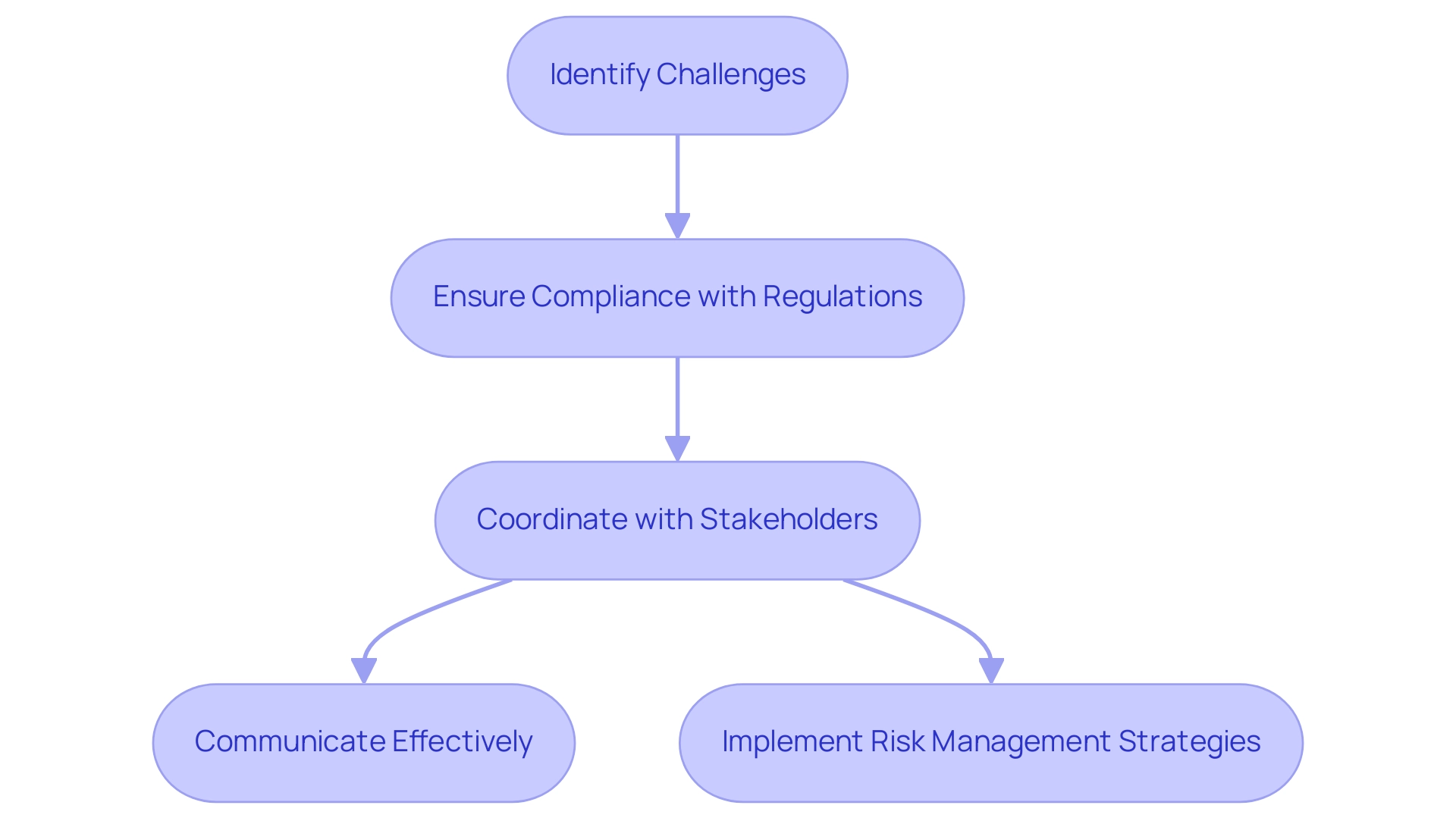
Collaboration and Communication: The Principal Designer’s Role in Team Dynamics
Teamwork and interaction are essential to the role of a Principle Designer in construction endeavours. Engaging closely with clients, contractors, and fellow designers is critical to ensure alignment on objectives and quality guidelines. Regular meetings and updates not only maintain transparency but also facilitate the timely resolution of any concerns that may arise during the design process.
In 2025, effective collaboration strategies are more crucial than ever, particularly as the industry adapts to evolving work models. Approximately 38% of corporate executives anticipate that employees will work remotely for two or more days a week post-pandemic. This trend underscores the necessity to implement thoughtful collaboration models that support effective teamwork in hybrid settings.
The principal designer plays a vital role in fostering a culture of well-being within the team. By encouraging open dialogue about potential risks and solutions, the principal designer cultivates an environment where safety is prioritised. This proactive approach not only enhances team dynamics but also significantly influences overall success. Research indicates that effective communication can enhance outcomes, with teams that prioritise collaboration experiencing a marked increase in efficiency and effectiveness.
Best practices for communication among construction teams in 2025 include:
- Utilising digital tools for real-time updates
- Establishing clear channels for feedback
- Promoting a culture of inclusivity where all team members feel empowered to share their insights
The evolving nature of work necessitates innovative collaboration strategies. By adopting these strategies, businesses can ensure that their initiatives not only meet safety requirements but also achieve their intended goals efficiently.
Furthermore, with infrastructure investments likely benefiting non-residential infrastructure initiatives, the importance of collaboration in navigating these opportunities cannot be overstated.
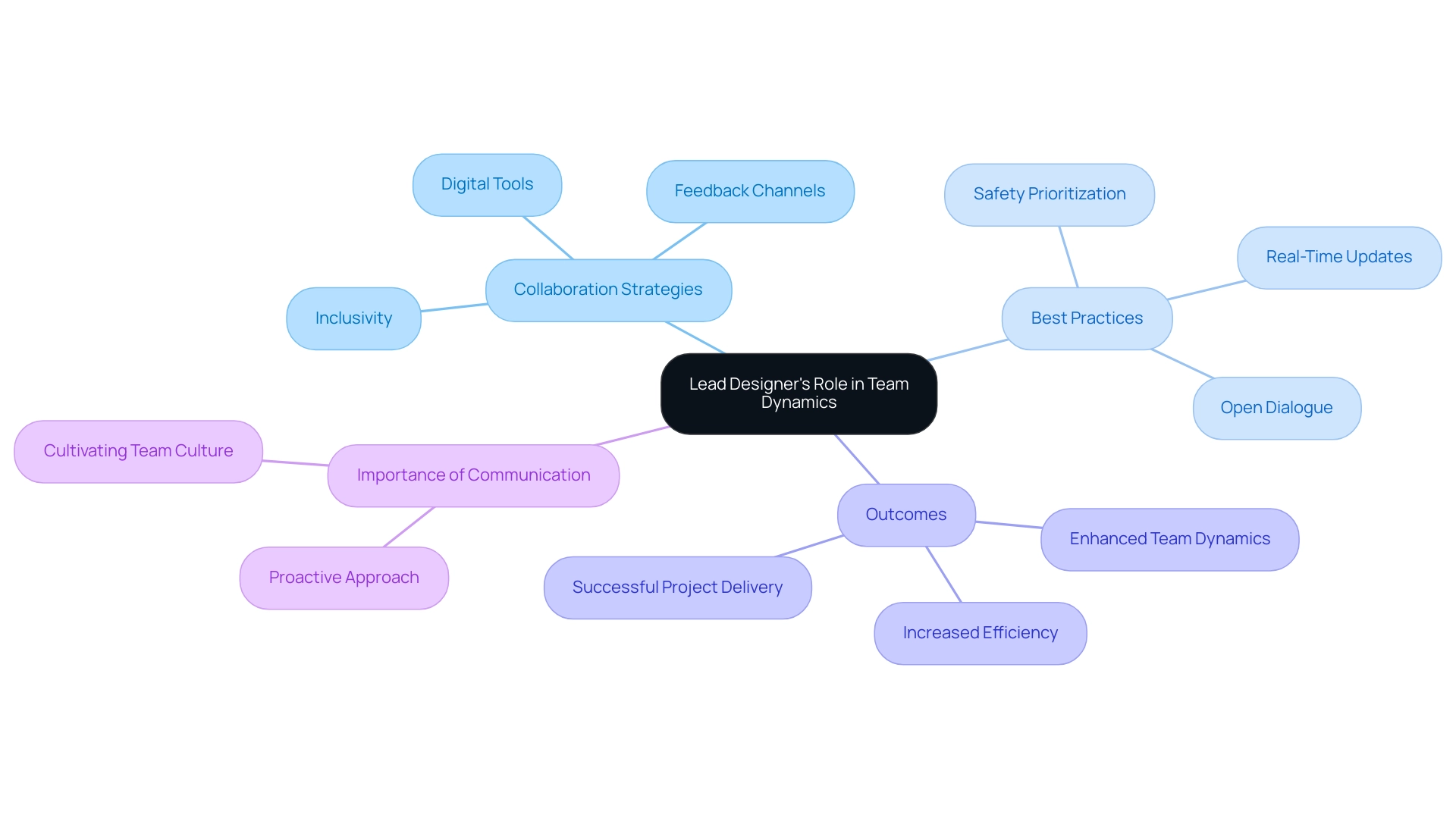
The Future of the Principal Designer Role: Trends and Innovations
The role of the Principle Designer is undergoing a significant transformation as the construction industry adapts to technological advancements and an increasing emphasis on sustainability. By 2025, the incorporation of Building Information Modelling (BIM) is set to revolutionise workflows, enabling Principle Designers to enhance collaboration among stakeholders and optimise project outcomes. Through BIM, these professionals can visualise complex designs, foresee potential challenges, and facilitate informed decision-making throughout the lifecycle of a project.
Moreover, the growing focus on sustainability demands that Principle Designers integrate environmental considerations into their design processes. This shift aligns with broader industry objectives, such as achieving Net Zero Carbon emissions, which has become a critical benchmark for construction projects. Edmond Shipway’s commitment to sustainability exemplifies this trend, as their consultancy actively promotes energy efficiency and CO2 reduction strategies, positioning them as leaders in this vital area.
As the industry evolves, Principle Designers must remain informed about emerging trends and innovations to maintain their effectiveness and relevance. This includes a thorough understanding of the implications of the Building Safety Act, which mandates the appointment of Principle Designers and Lead Contractors for projects requiring new Building Regulations applications.
Such regulatory changes highlight the necessity of proactive compliance and risk management in design projects, underscoring the rising demand for skilled principal designers equipped to navigate complex regulatory environments and leverage advanced technologies. Edmond Shipway has extensive experience and capability within the industry. Their comprehensive consultancy services in building, with a focus on management and cost-effectiveness, further enhance their ability to address the evolving demands of clients across diverse sectors, including hospitality, healthcare, and finance.
By embracing these trends, principal designers can ensure they meet the changing needs of clients while contributing to the overall success of construction projects in a rapidly evolving landscape.
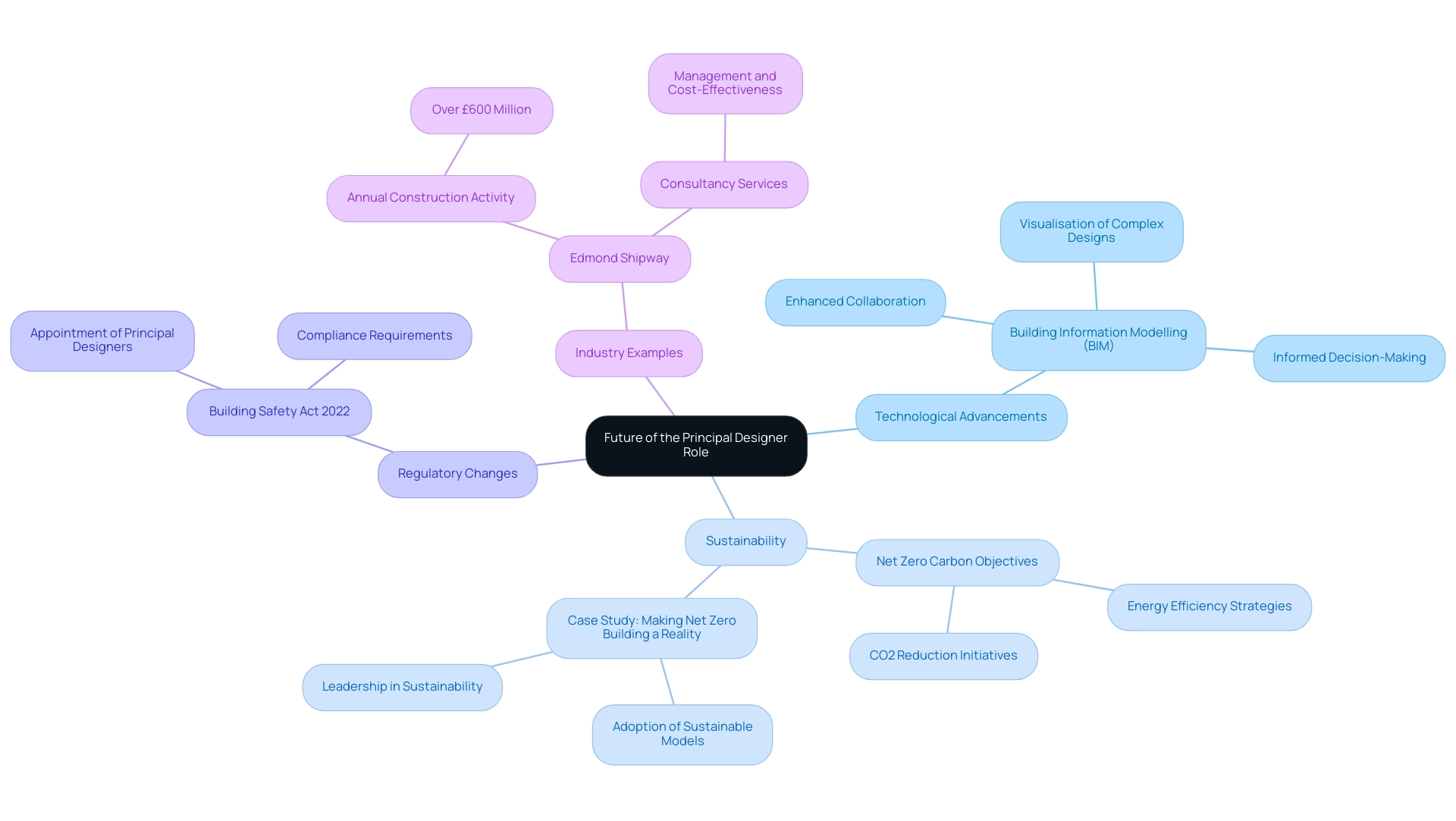
Conclusion
The Principal Designer is pivotal in ensuring health and safety within the construction sector, particularly under the Building Safety Act 2022. By embedding safety measures from the outset, they not only ensure regulatory compliance but also foster a culture of safety that benefits all stakeholders involved. Their proactive approach in coordinating design efforts and managing project risks is crucial for achieving successful project outcomes and enhancing client satisfaction.
As the industry evolves, effective collaboration and communication become paramount. Principal Designers must adapt to new work models and utilise digital tools to maintain inclusivity and facilitate real-time updates, especially in a landscape where remote work is increasingly prevalent.
Looking ahead, the integration of technologies such as Building Information Modeling (BIM) and a heightened focus on sustainability will further transform the Principal Designer’s role. By embracing these advancements, they can improve project efficiencies and contribute to the goal of Net Zero Carbon emissions, all while navigating complex regulatory environments to prioritize safety and sustainability.
In essence, the Principal Designer stands at the forefront of construction safety and innovation. Their evolving responsibilities reflect a broader commitment to creating safer, more sustainable built environments. As the construction landscape continues to change, the importance of their role will only increase, underscoring the need for skilled professionals in this critical position.
Share


